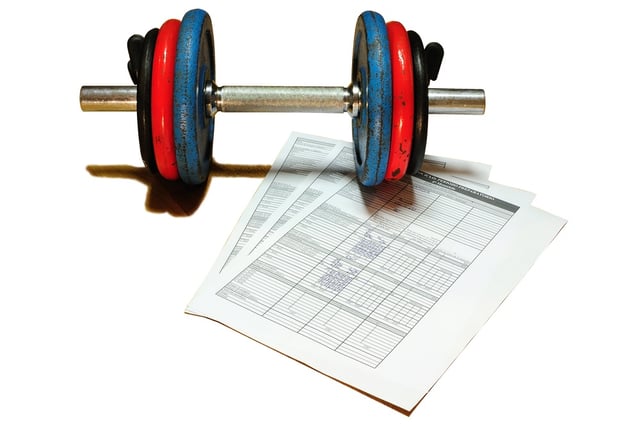OVERTRAINING SYNDROME: WHAT IS IT? — AND HOW TO AVOID IT
December 7th, 2019 | 4 min. read

Competitive athletes learn from their first day of training that in order to become better, stronger, and faster, they need to train harder than they have ever done before. They also know that overtraining is a real possibility, this creates a delicate balance between training hard and getting the proper rest.
Often, athletes are encouraged to “push themselves" and to “give a hundred and ten percent.” Some are even encouraged to ignore when they have hit their physical and mental limits. Rather, they need to “dig down deep” so they can “break through the wall” and to “get themselves up to the next level.”
One famous mantra, “no pain, no gain,” captures this spirit perfectly: if your training doesn’t leave you sore and hurt, you won’t improve.
What may be lost among all these well-intentioned coaching clichés is the very real danger to athletes who ignore what their own bodies are telling them. While training hard is an accepted method for improvement, the same philosophy can result in athletes who have “run themselves into the ground,” “burned out,” or “hit a wall.”
Athletes who are in this exhausted, hurting, and discouraged state of body and mind have given themselves a condition known as Overtraining Syndrome.
WHAT IS OVERTRAINING SYNDROME?
Overtraining Syndrome (OTS) is a condition that occurs when a body gets too much exercise and not enough rest.
It most commonly occurs among athletes who, over sustained periods of time, exercise to the point of total exhaustion — and then do not give their bodies enough rest time to recover. Rather than train, rest, recover, and repeat, they are training, training, training, and their bodies can pay a heavy price.
SYMPTOMS OF OVERTRAINING SYNDROME
The primary telltale sign of overtraining syndrome is an unusually powerful feeling of exhaustion.
A normally high-energy player may find themselves forced to cut workouts short because they are physically unable to continue. If their fatigue persists during non-training days, and even when the athlete has been at rest, they are very likely experiencing OTS.

Other physical symptoms of Overtraining Syndrome include:
- Persistent muscle soreness
- Unshakable fatigue
- Decreased performance (loss of speed, strength, and flexibility)
- Increased susceptibility to injury and viral sicknesses
In addition to the physical signs of overtraining, there are often accompanying emotional and behavioral issues, such as:
- Moodiness, irritability, depression
- Changed sleep patterns
- Decreased appetite and weight loss
Clinical studies have shown the physiological consequences of too much training and not enough rest include the following:
- Increases in cortisol (a.k.a., human “stress hormone”)
- Increases in muscular breakdown products (possibly leading to rhabdomyolysis, a condition caused by the rapid breakdown of skeletal muscle, and subsequent release of myoglobin into the bloodstream, which may cause kidney failure)
- Decreases in testosterone
Fortunately, every one of these signs of overtraining syndrome can be treated simply and effectively. As long as no other complications exist, all that is required is rest and hydration.
HOW TO TREAT OVERTRAINING SYNDROME
 Complete rest is the single most effective means to treat overtraining syndrome.
Complete rest is the single most effective means to treat overtraining syndrome.
The amount of rest required depends on the length, intensity, and type of training that caused the OTS. Your personal medical history will also play a factor in the amount of rest prescribed.
For example, a high school football player who has been fatigued for 3–4 weeks will normally be instructed to top all training activities for 3–4 days.
It is important to note that complete rest is absolutely essential for full recovery from overtraining syndrome.
This is because the body does not differentiate among different types of exercise. To the heart, lungs, adrenal glands, and other organs and systems, all stressed caused through physical activity is identical.
Thus, a high school football player ordered by a doctor or sports medicine professional to stop going to team practices must not “try to keep up with the team” by substituting heavy gym workouts or long-distance runs on their own. By doing so, they will never fully recover from overtraining syndrome, and will likely continue suffering from its effects.
THE MECHANISM OF SUCCESSFUL TRAINING
To better understand the deceptively simple treatment of OTS, it's helpful to learn the physical effects of exercise and rest on the human body.
The formula for successful training has been well-documented through the years: a period of hard physical exertion, followed by a sufficient period of rest, repeated until the desired levels are achieved.
The purpose of hard training is to enhance the body’s muscular and cardiovascular systems by working them to their maximum capacities. However, the exercise itself does not actually achieve this goal.

In reality, intense exercise actually causes damage to the body. Muscle fibers stretch and tear, the heart is forced to work harder, and blood pushes faster and harder through veins and arteries, raising blood pressure significantly.
It is only after the workout is complete and the body has rested sufficiently that the desired physical benefits occur.
This is known as a recovery period. It must last long enough for the body to completely heal from the damage caused by the training period.
Once the body is fully recovered, the results include increased strength, greater endurance, improved efficiency of the heart, and enhanced intracellular capacities of energy storage.
HOW TO AVOID OVERTRAINING SYNDROME
The absolute best way to prevent being hit by overtraining syndrome is through prevention.
Coaches of high school athletes in particular may use the following simple, unintrusive training suggestions to ensure their students avoid overdoing things during practices:
- Avoid monotonous training activities.
- Avoid sudden increases in training, such as doubling workout times or intensities. Gradual increases allow the body to properly train, adjust, and recover.
- Integrate appropriate rest periods into all training regimens. For example, you may alternate high intensity, aerobic days with low intensity, endurance-focused workouts.
Athletes themselves should always be aware of their own limits. High school athletes, especially those who are just learning their own capabilities, should keep the following suggestions in mind to keep themselves from suffering the fatigue and confusion that accompany overtraining syndrome.

- Keep a personal training log, one that includes measurable records of TYPES of training, such as distances ran, number of repetitions, resting heart rate, and maximum heart rate.
- Self-evaluate: using a scale of 1 through 10, record both your perceived INTENSITY of the day’s workout, and the intensity of your post-workout exhaustion (1 being easy and 10 being completely exhausted).
- Ensure proper nutrition and hydration.
- Always listen to your body! Observe any potential warning signs, such as:
- Are you sweating much more than normal?
- Are you pushing yourself harder than a regular practice?
- Have you taken breaks?
- Do you feel unusually weak, dizzy, or sick?
Listening to what your body tells you is usually the best way to avoid overdoing your training and putting yourself at risk for harm, including orthopedic injuries like sprains, strains, tendon or muscle inflammation, and other sports injuries.
Remember, adults: student athletes aren't the only ones susceptible to overtraining. Long-distance runners (especially those training for road races and marathons), triathletes, weight lifters, cyclists, weekend warriors, and adult men and women trying to get into shape fast can also suffer from OTS.
Article written by: Rob Williams, MD
To learn more, call our office in Corpus Christi, TX, call Coastal Orthopedics at 361.994.1166.
Dr. Williams has been practicing orthopedic surgery in Corpus Christi since 1998. After graduating from Texas Tech hereceived his medical degree from the University of Texas at San Antonio. At the prestigious Campbell Clinic located at the University of Tennessee, Dr. Williams completed not only an Orthopedic Surgery Residency, but an additional year of Fellowship Training in Spine Surgery. Dr. Williams is dedicated to creating an excellent patient experience in the office or in the surgery suite.
Topics:

